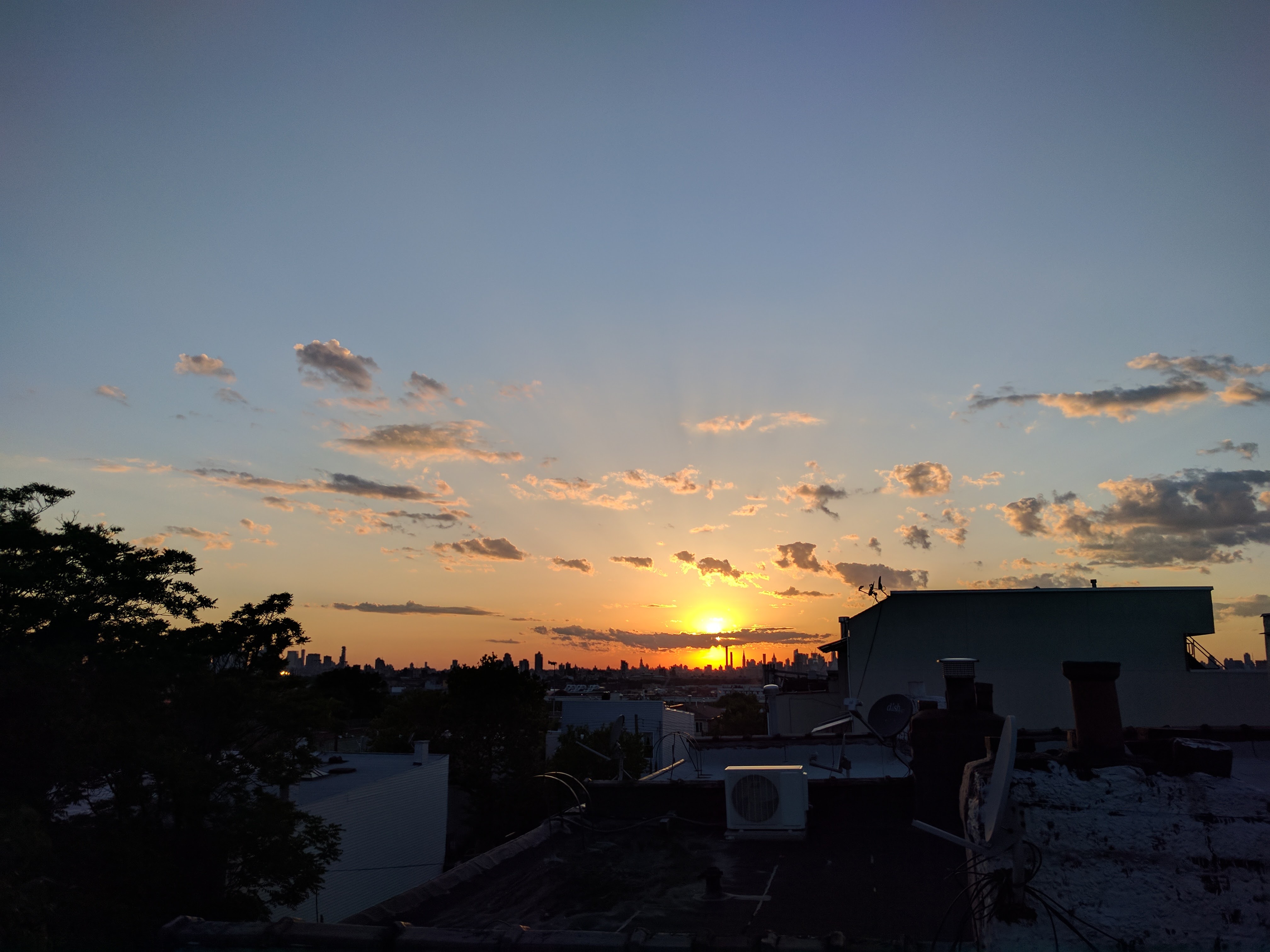United States, New York City
FC-01x Future Cities (Self-Paced) - Exercise 3: "Factors of Livability"

Uploaded on 2017-07-01 by Francesca
The picture uploaded is taken from my rooftop in NYC. It shows the skyline from my neighborhood in Queens, about 20 minutes from the city-center. Step 1: List the five most liveable cities that you know, based on your own experience and judgment, placing the most liveable city at the top of the list 1. Vancouver 2. Copenhagen 3. Berlin 4. Seattle 5. Portland Step 2: Describe in your own words five characteristics that according to your opinion make a city liveable. Order them placing the most important at the top of the list. 1. Infrastructure: availability of quality/affordably housing, quality roads, public transport, hospitals and consistent availability of public utilities 2. Freedom of Mobility: the ability to easily travel around the city using a variety of methods (biking, public transportation, driving, and especially walking) 3. Nature: Ability to see, engage with, be surrounded by different types of nature on a daily basis; access to parks as well as smaller green spaces and green-infused infrastructure around the city 4. Recreation and Privacy: Easily accessible areas and spaces of peace, quiet and privacy, mixed with areas of social experiences and conviviality with strangers. 5. Stability and resiliency: ability for a city to maintain stability, even during difficult times, to have relatively low crime rates and adapt to increasing densities by expanding but not sprawling to maintain a comfortable density of people Step 3: Describe the status of your own city in terms of the five characteristics that you listed above. Propose how your city should/could be transformed in relation to these characteristics in order to be more sustainable. I live in New York City. For each attribute listed, I have ranked my city on a scale of 1-10, with 1 meaning it is extremely unsuccessful in regard to this attribute, 10 meaning it is extremely successful, 5 is neutral. I have then explained how the city could transform in relation to these characteristics to be more sustainable. 1. Infrastructure: 6. New York has extensive and hardy infrastructure, but it is aging quickly and often struggles to keep up with the increasing density of people. The MTA and subway system has seen an increasing number of dangerous failures in the past few years and there are many hospitals in the city that underserve their neighborhoods and visiting patients. It is necessary to update this infrastructure if the city wants to continue to thrive. For example, replacing older trains and train tracks with new ones, and requiring hospitals to adhere to a certain standard of care and # of doctors per patients. These efforts must be subsidized by the government and they should attempt to use local materials rather than importing foreign/far away materials. Building newer, more efficient infrastructure in a more efficient and environmentally friendly way can help the sustainability of NY. 2. Freedom of Mobility: 8. There are an incredible number of ways to get around in New York, but not all are created equal. In certain areas of the outer-boroughs the only options are slow buses, walking or driving—none of which are very efficient or good for the environment. Increasing the number of safe bike lanes and created an outer-borough trolley system could help the city immensely, especially for residents who do not reside in Manhattan but are still an important part of the city. Providing more efficient ways of travel with lower carbon emissions (electric trolleys, biking, walking) can help the city become more sustainable. 3. Nature: 7. There is incredible green space in Manhattan but again, much of Brooklyn and Queens is barren with the exception of large parks. Smaller parks should be built to allow citizens daily, routinized access to nature. Greenery isn’t just good for people, it’s good for our environment. 4. Recreation and Privacy: 8. It’s easy to feel isolated in New York when the only place of peace and quiet is your apartment or even your bedroom (if you live with roommates). Developers should consider creating more semi-private/semi-public courtyards and outdoor spaces where citizens can find a comfortable balance of exposure to others and privacy. Creating these outdoor spaces will also allow for more greenery, which helps cool the temperatures, and provide sustainability. 5. Stability and resiliency: 7. As the density of NY climbs and neighborhoods are gentrified to welcome newer, richer residents, it will be necessary for the government to assure affordable housing in ideal neighborhoods so that everyone in the city can have access to a livable city experience. This will build the bonds of neighborhood and family throughout the city, and lead to a greater feeling of investment on behalf of citizens to help their city become more resilient and sustainable.